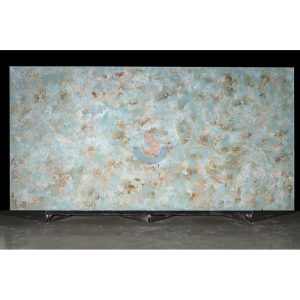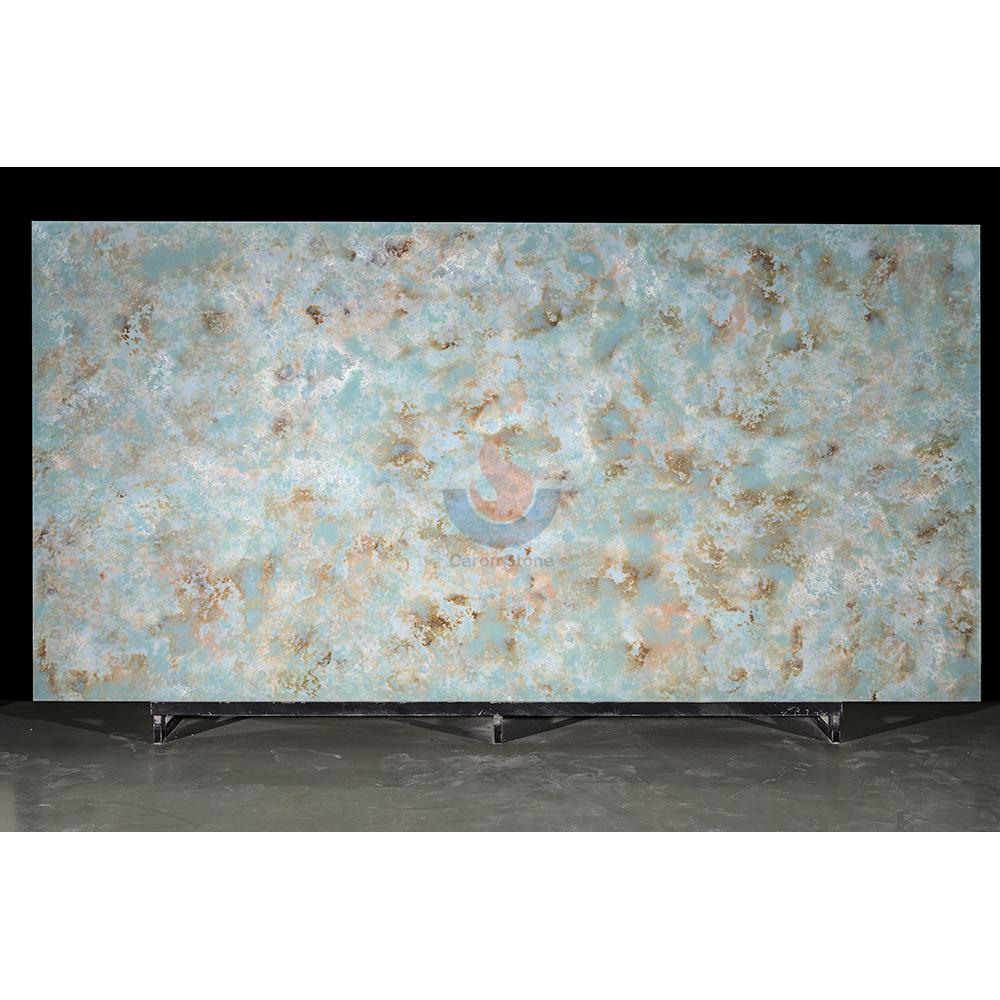Quartz, as a man-made stone, has rapidly risen in the construction field in recent years and has become a new favorite of designers and architects. Among many building materials, it is unique in terms of physical qualities, variety of appearances, and environmental friendliness. This article will explore the application advantages of quartz in the construction field, analyze how it meets the high standards of modern architecture, and look forward to its potential in future architectural development.

Calacatta White Artificial Quartz 46
1. Durability and wear resistance
Quartz crystal makes up most of the mineral and offers it great wear resistance and durability. Quartz can resist constant use in settings like busy commercial areas or household kitchens without being readily worn or damaged.
2. Anti-pollution and easy cleaning
In settings like labs and hospitals that demand strict cleanliness standards, quartz is a perfect material since its surface is tight and it does not readily collect liquids and stains. Its non-permeability also lessens bacterial growth and enhances hygienic safety.
3. High temperature resistance
Quartz is not easily burned or distorted and can resist great temperatures. Kitchen counters and other surfaces that might come into touch with hot objects would find this property perfect.
4. Diversity of colors and textures
From current abstract designs to imitation of actual stone, quartz provides a broad spectrum of color and texture choices that satisfy many design requirements and personal tastes. This variety offers a large area for developing original interior and architectural ideas.
5. Chemical resistance
Highly resistant to most chemicals, quartz resists chemical reagents used in industrial settings or chemical labs.
6. Low maintenance cost
Quartz’s wear endurance, pollution resistance, and chemical corrosion resistance mean practically minimal maintenance is required. Its beauty and functionality depend on just basic cleaning, therefore drastically lowering maintenance expenses.
7. Environmental adaptability
Quartz can function reliably in a variety of environmental conditions, including dry desert environments or humid tropical ones.
8. Sustainability
Quartz is a man-made material whose manufacturing process is more under control, which helps to comply to the idea of sustainable development and hence lower reliance on natural resources.
9. Customizability
Whether it is size, form, or design elements, quartz can be tailored to the particular needs of the project and satisfy individual design criteria.
10. Environmentally friendly characteristics
Using recycled materials throughout the quartz manufacturing process helps to both fit the trend of green buildings and lessen environmental effect.
11. Structural stability
Particularly in building projects requiring exact and solid support, quartz’s structural stability makes it a perfect material for load-bearing constructions and supporting components.
12. Acoustic and thermal properties
Furthermore having specific acoustic and thermal characteristics, quartz can absorb noise and control indoor temperature, so enhancing living comfort.
13. Art and design value
Quartz is quite valuable in the domains of art and design because of its beautiful qualities. Works of architectural and interior design with great visual impact can be produced from it.

Green Excellent Quality Hotel Wall Countertops Artificial Quartz Slabs Engineered Stone With Veins
The application of quartz in the construction field has significant advantages, including durability, wear resistance, pollution resistance, high temperature resistance, diversity of colors and textures, chemical resistance, low maintenance cost, environmental adaptability, sustainability, customization, environmental protection characteristics, structural stability, acoustic and thermal properties, and artistic and design value. These benefits not only satisfy the several objectives of contemporary design but also capture the possibilities of quartz as a high-performance material. Quartz will be applied more widely and its significance in the building industry will grow as technology develops and environmental preservation takes front stage. Quartz displaying more creativity and value in next building projects excites us since it will help to create more lovely, useful, and ecologically responsible architectural environments.





